Snow Leopard - Queen of the Mountain
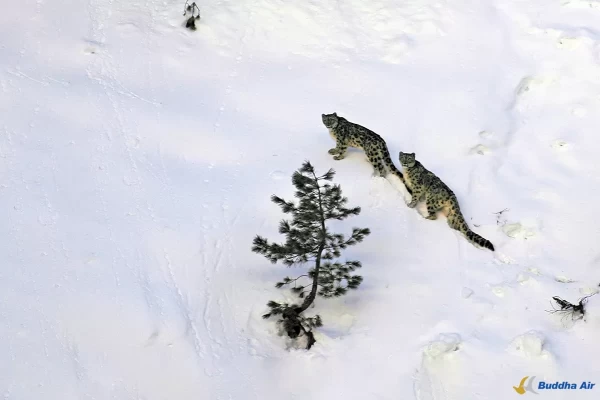
Leopards living in the Himalayan region are known as 'snow leopards.' These creatures inhabit altitudes ranging from 3,000 to 5,500 meters, some reaching up to 6,000 meters.
Snow leopards are highly shy. Conservationists often refer to them as the ‘Guardian of the High Mountains,' 'Top of the Food Chain,' and 'Queen of the Mountain,' among other titles.
Their fur blends with the natural surroundings, making them difficult to spot.
The earth is a shared home for all animals and birds, and everyone has equal life rights. Snow leopards also serve as indicators of ecosystem health. Even the mere sight of their footprints shows that the ecosystem in that area is balanced.
It is estimated that there are between 4,500 and 7,000 snow leopards worldwide. These creatures are found across 12 countries, including China, India, Nepal, Bhutan, Mongolia, Russia, Pakistan, Afghanistan, Kazakhstan, Kyrgyzstan, Uzbekistan, and Russia.
The population of snow leopards in Nepal is estimated to be between 350 and 400. They are scattered throughout the Himalayan region, with the highest concentration found in Dolpa. Other notable areas include Manang, Langtang, Sagarmatha, Gaurishankar, Kanchenjunga, and Humla.
You may also read: On the Rebound Langtang
Snow leopards are considered endangered, with their numbers dwindling due to habitat destruction, climate change, development impacts, human activities within their habitats, and conflicts between humans and snow leopards.
Safeguarding snow leopards is essential to protecting the environment. Several organizations are working to conserve these species in Nepal. The Nepal government should launch a special campaign to reduce conflicts between humans and snow leopards, including programs such as insurance for people and livestock. Additionally, promoting ‘snow leopard tourism’ should be a priority.
Photographing snow leopards is challenging. They live in remote, high-altitude areas and roam the wilderness. Tracking and capturing their images requires courage, dedication, patience, physical endurance, and ample time.
Below are some of the photographs I took in Manang, showcasing the various moods of the snow leopards:
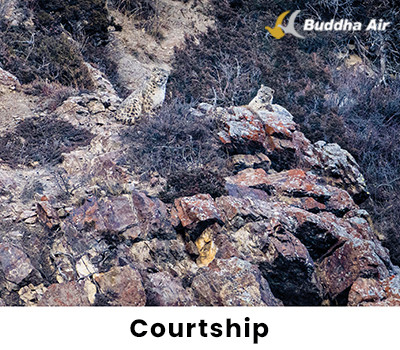
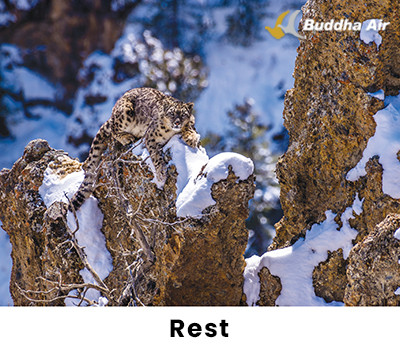
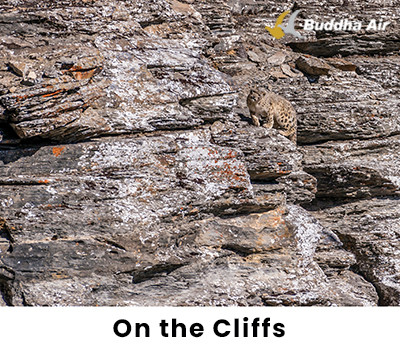
1. Courtship
The mating season of the snow leopard lasts for three months, from January to March. The female spreads her scent, and the male follows her by sniffing it. Once they meet, mating occurs over two weeks. After mating, they go their separate ways. Pregnancy lasts for 90 to 110 days. Once the baby is born, the female is responsible for raising it. This photo was taken in February.
2. Rest
The photo of a snow leopard sitting on a rock was taken in Gunsang. After seeing its footprints in the snow, I found it after walking for about three hours. Snow leopards prefer to live in areas with no security threat and where food is readily available. They primarily hunt Naur, a deer also called blue sheep, and eat their prey over two days. Then, they do not hunt for about a week and usually spend this time resting while monitoring their territory.
3. On the Cliffs
Snow leopards are easily visible in areas covered with snow. However, they are difficult to spot on rocky surfaces because the color of the rocks blends with their fur. If they sense a security threat, they often climb cliffs with ease.
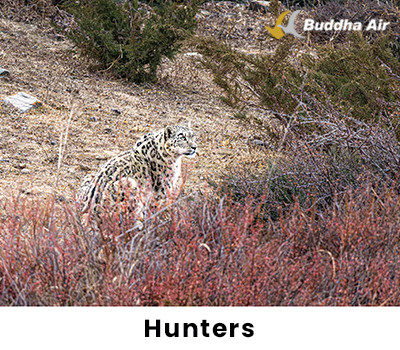
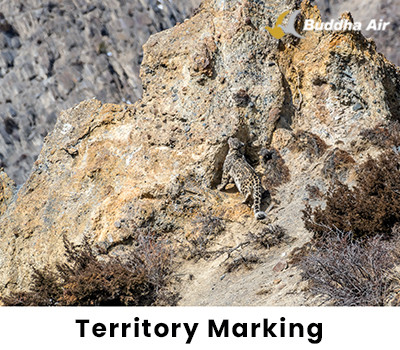
4. Family
The female (mother) snow leopard raises the cub after birth. This process takes about 18 months to two years. The cubs are typically born in caves, where they stay for the first three months before venturing outside. After 15 months, they are taught how to hunt.
5. Hunters
Snow leopards especially prefer hunting Naur. They are active hunters from dawn to dusk, tracking the movements of their prey for 7 to 8 hours. They typically hunt in the evening. As the deer struggles to survive by running away, the snow leopard also strives for survival, hunting for food.
6. Territory Marking
The snow leopard's habitat covers 25 to 35 square kilometers for females and 90 to 110 square kilometers for males. They do not welcome other snow leopards into their territory, so they monitor their area every eight to ten days and mark it by leaving their scent in various locations. This scent acts as a deterrent, preventing others from entering. There are three types of territory marking: Rock Scent, Scrape, and Scratch.
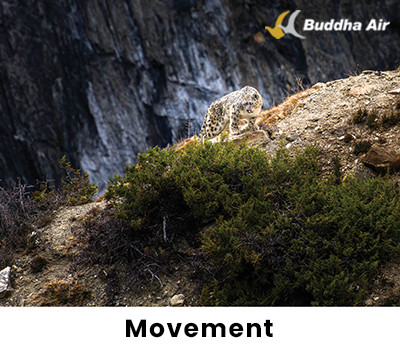
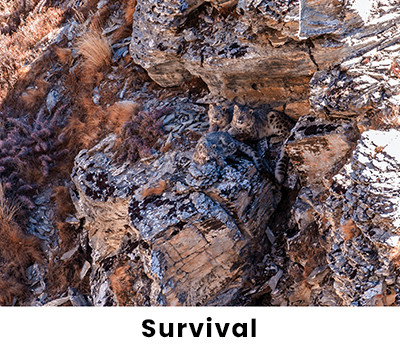
7. Movement
Snow leopards enjoy walking on the ridge line, baseline, river bed, and human trails. In the picture shown, they are seen walking along the ridge line. When walking on the ridge at the top of the mountain, they can easily spot their prey on both sides and detect potential security threats.
8. Survival
Snow leopards give birth to two to five cubs at a time, but very few survive. The environment is frigid, and the mother often goes out searching for food. If she takes too long to return with food, other animals like hawks, crows, and foxes may kill the cubs. Another major challenge is the cold, which can lead to pneumonia, and the cubs may eventually die.
9. Snow Leopard
Snow leopards live for 14 to 16 years. They are called "snow leopards" because of their ability to survive in snowy conditions. Their bodies are well-adapted to the cold, and their wide paws make walking on snow easier.
10. Medicine
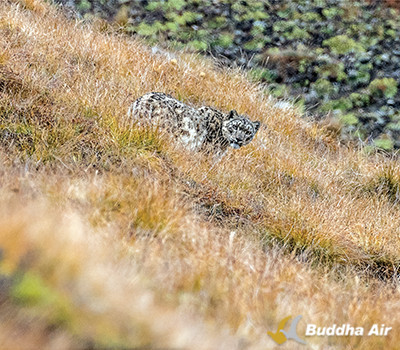
The primary diet of snow leopards consists of wild animals. However, they sometimes eat grass for medicinal purposes. After consuming raw meat, they eat plants to help with digestion. During the mating season, they also consume the leaves and branches of certain bushes. When they have difficulty making sounds through their throats, they eat ephedra roots. Nature has taught them these practices. They also eat the fruit of the pine tree.
About the Conservationist
 Tashi R. Ghale, born in Manang village, Manang district, is a senior wildlife photographer with over three decades of experience. He has dedicated the past two decades to photographing snow leopards.
Tashi R. Ghale, born in Manang village, Manang district, is a senior wildlife photographer with over three decades of experience. He has dedicated the past two decades to photographing snow leopards.
Ghale has traveled to numerous locations, including Mount Everest, Mustang, Dolpa, Koshi Tappu, Bardiya, and Shuklaphanta, capturing stunning wildlife images. His photographs have been featured in well-known travel magazines, international journals, and calendars in Nepal and abroad. He has also exhibited his wildlife, landscape, and abstract photography in Nepal and Austria.
In 2006, Ghale began studying snow leopards and has since been actively involved in research, photography, and public awareness efforts. Through his work, he has become a respected conservationist. In 2013, he captured the first photograph of a Pallas Cat in Nepal's Manang area, and in 2015, after a gap of forty years, he captured an image of the Himalayan wolf in Manang.
Ghale has received numerous awards, including the 'Disney Conservation Hero Award 2018' from the Disney Conservation Fund in the United States, the 'Abraham Conservation Award 2016' from WWF Nepal, and the 'Bob and Zhang/Xavier Conservation Award 2024' from the United States.
"Taking pictures of snow leopards is a hobby," says the 55-year-old conservationist Ghale. "I feel fulfilled participating in the snow leopard conservation campaign."
In addition to his work as a photographer, Ghale is also a hotelier. He operates the 'Hotel Mountain Lake' in his hometown of Manang, along the Annapurna Secret Trek.
Congratulations to Tashi R. Ghale, a dedicated conservationist committed to preserving wildlife and birds!
